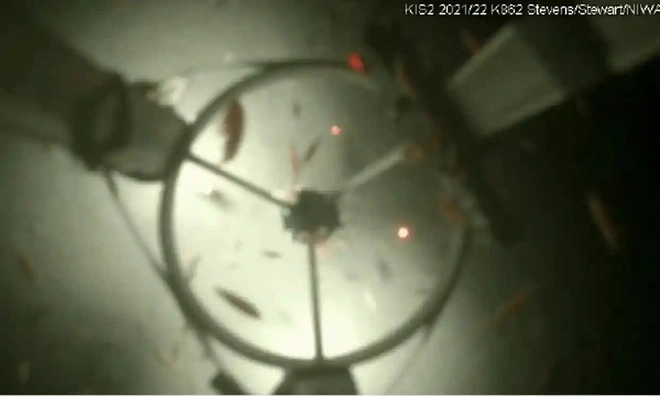Scientists in New Zealand have recently discovered an underwater ecosystem hidden 500 meters beneath the largest ice shelf in Antarctica.
The researchers found an ecosystem beneath the ice layer at a river mouth located hundreds of kilometers from the edge of the Ross Ice Shelf—the largest ice shelf in Antarctica, as reported by The Guardian on June 6.
Initially, the research team was investigating the role of the river mouth in relation to the melting of the ice shelf due to climate change.
However, as they drilled deep into the ice and beneath the river, the camera was covered by swarms of crustaceans—small creatures related to lobsters and crabs.
“For a moment, we thought the camera had a problem, but when we adjusted the focus, we discovered a group of crustaceans about 5 mm in size,” said Craig Stevens, a member of the National Institute of Water and Atmospheric Research in New Zealand.

Crustacean-like creatures discovered in the river beneath the Ross Ice Shelf. (Photo: The Guardian).
Mr. Stevens noted that this was a significant surprise. “We were very excited because discovering such animals means there is an important ecosystem there.”
Huw Horgan, the project lead from Victoria University of Wellington, was the first to identify the river mouth after observing the ice channel while studying satellite images of the Ross Ice Shelf.
Previously, researchers had known about a network of rivers and freshwater lakes hidden beneath the icebergs in Antarctica, but direct surveys had not yet been conducted.
“Observing and sampling from this river felt like being the first to step into a hidden world,” Mr. Horgan remarked.
He added that they had placed recording devices in the river for observation, while researchers in the laboratory would analyze what makes this river special.


















































